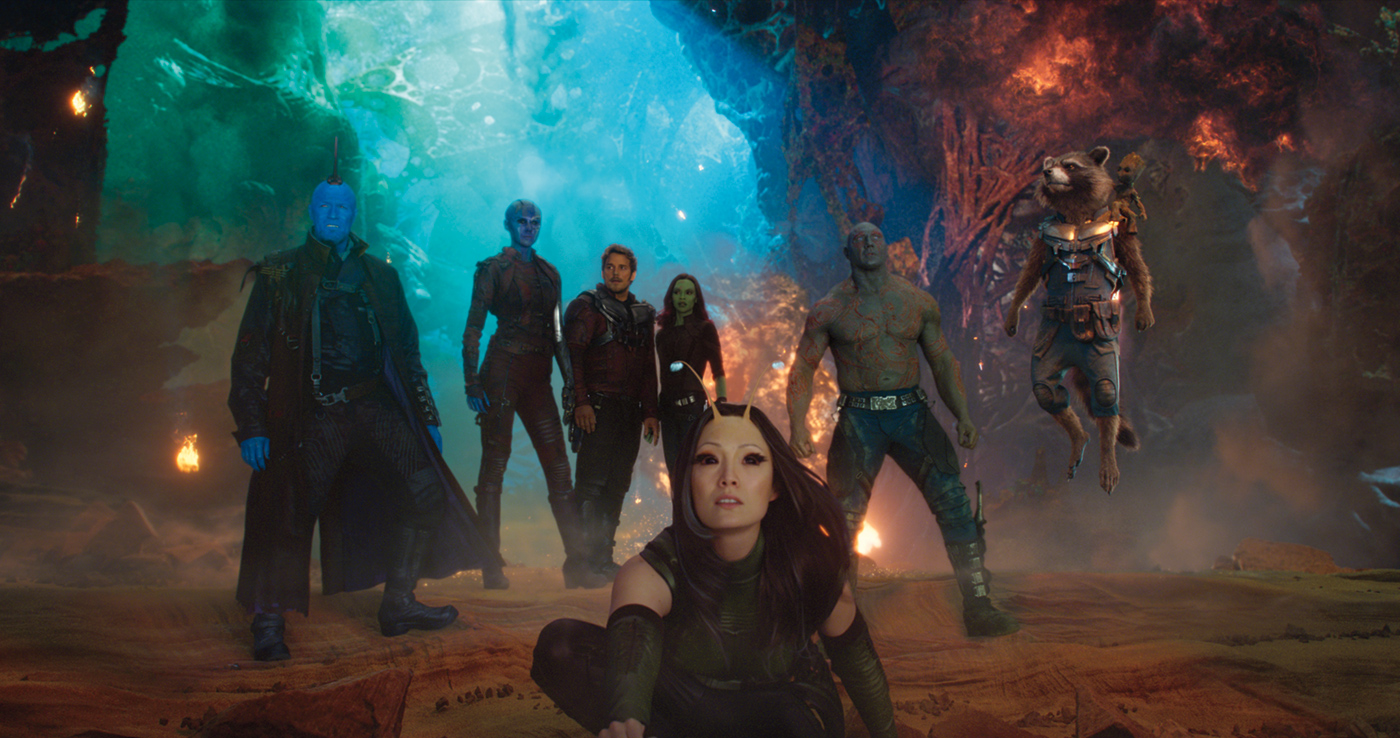The galaxy’s most dysfunctional guardians are back to save the Marvel Cinematic Universe in GOTG, Volume 2.
by Kevin H. Martin
Unit Stills by Chuck Zlotnick
Frame Grabs Courtesy of Marvel
The two-time-Oscar-nominated film Guardians of the Galaxy [shot by Ben Davis, BSC] was a surprise hit with audiences, even if it boasted an MCU (Marvel Cinematic Universe) pedigree. The rollicking science-fiction adventure-comedy followed the escapades of the self-proclaimed Star Lord [aka Peter Quill, a human abducted by aliens during childhood], who teams up with a motley band of extraterrestrial misfits (including the genetically engineered raccoon, Rocket, voiced by Bradley Cooper; his tree humanoid sidekick, Baby Groot, voiced by Vin Diesel; and Zoe Saldana as Gamora, a green-skinned orphaned alien) to save the day.
For the sequel, helmed by returning writer/director James Gunn, many key creatives came back, including executive producer/unit production manager Nikolas Korda and stunt coordinator Thomas Harper, while additions to the Galaxy team included VFX supervisor Chris Townsend; Director of Photography Henry Braham, BSC; and 1st AC Zoran Veselic. We asked ICG writer Kevin H. Martin to take a virtual tour of the newest Guardian family scrapbook, and here’s what he came back with.
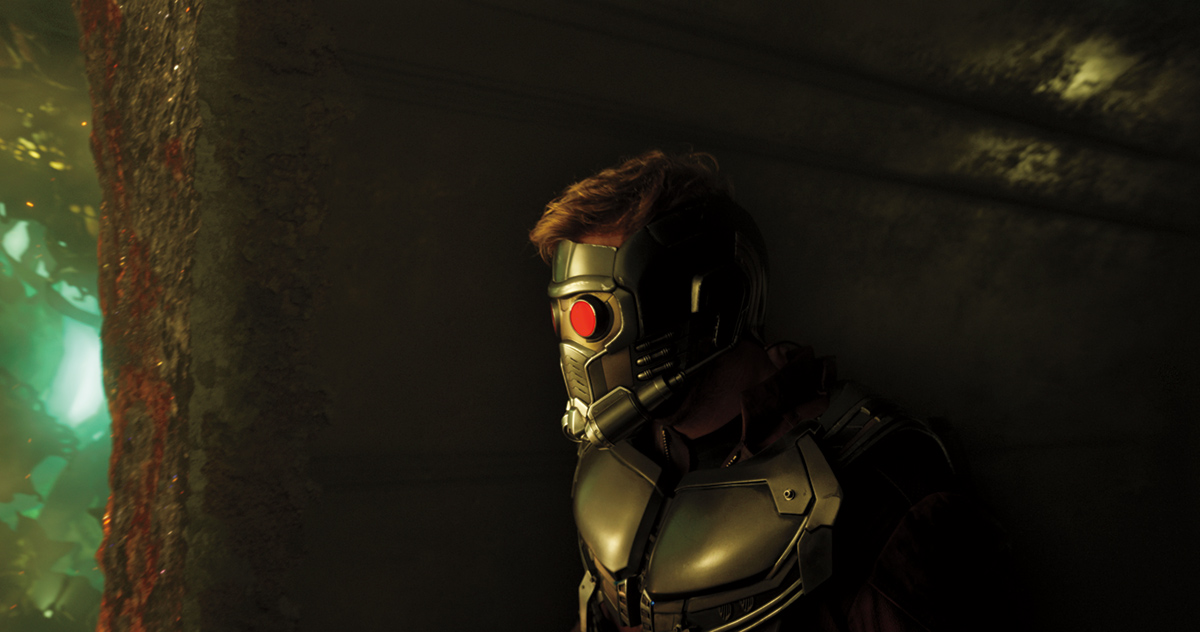
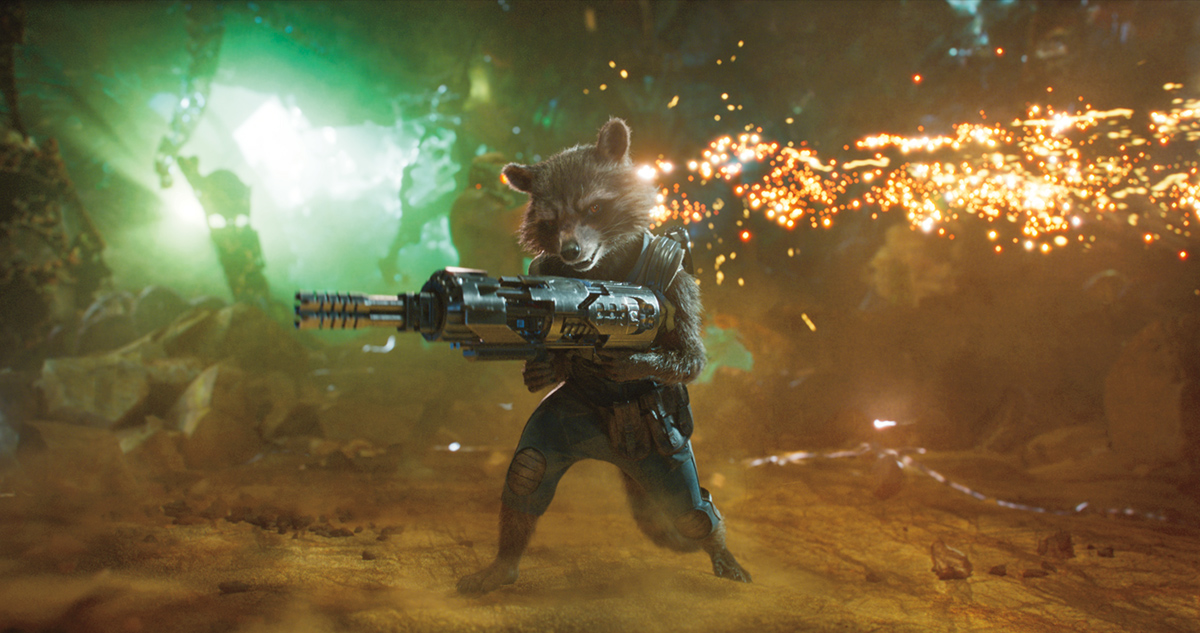
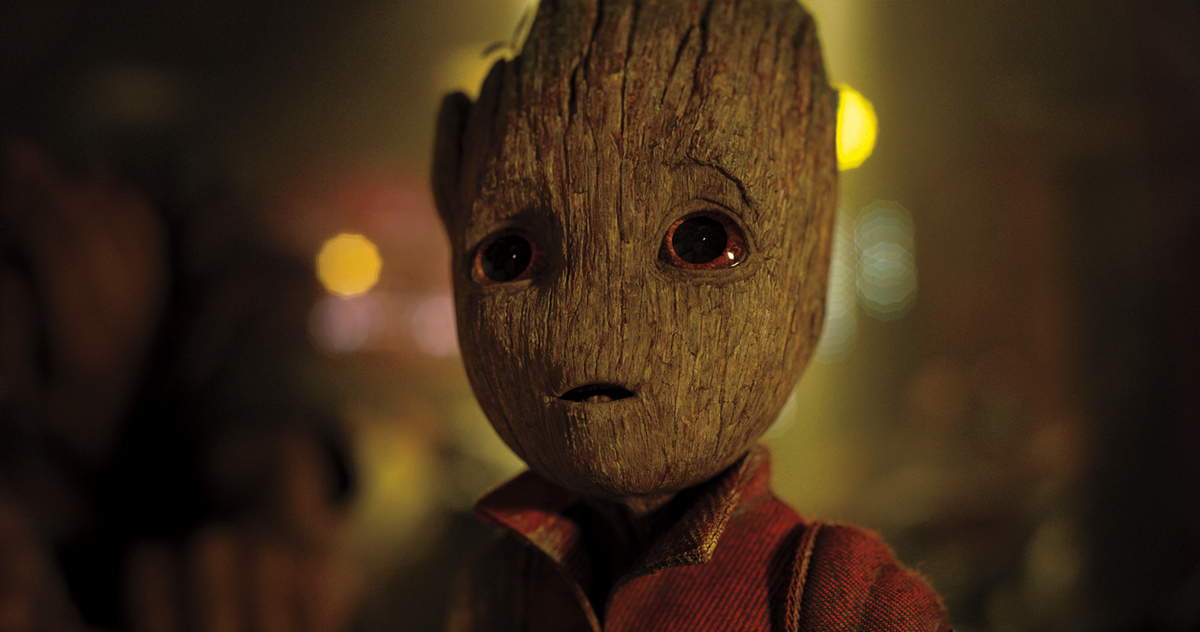
Style Riders
Henry Braham: The visual idea we evolved for this film was counterintuitive. It was a big theatrical event with a certain visual spectacle, including IMAX and 3D, but it’s also an intensely human story, with its humanity arising out of perceptive comedy. Although written, James [Gunn] evolves performances by riffing with the cast, so my job was to capture their spontaneity – an approach I love, but that required being fast and adaptable, i.e., the camera had to be spectacularly fluid. I had been working with stabilization experts with backgrounds in torpedo gyros, including Dave Freeth, who came up with a handheld dolly system called StabilEye.
Nikolas Korda: The system allowed Henry to operate with the aid of two assistants from [StabilEye], who were an integral part of the process. It allows you to zip-line the camera, do tracking shots or hang it on the end of a crane; it was practically a handheld Libra. But the StabilEye does have weight limitations.
Braham: We needed the freedom of a Steadicam, but with the solid stability of a crane for a perfectly stabilized handheld shot. Flying a camera easily on wires with StabilEye would get us into the tightest of spaces. It made for an entirely new way of working, but it meant we needed the most technically brilliant crew, because you’re pushing everyone to the nth degree.
Zoran Veselic: The idea of relying so extensively on a single piece of equipment seemed odd to me at first. My experience with MoVi and Ronin is that you bring it in just for special shots. But the UK StabilEye technicians were utterly brilliant, and it wound up being a huge benefit. You could put it in high mode or low mode, then go great distances on a cable very quickly.
Braham: When I showed James a clip of it in action, he immediately understood its significance, and designed shots specifically with [StabilEye] in mind – height changes and speed moves that you couldn’t have done any other way without getting into VFX solutions, which would have killed the spontaneity. Nearly eighty percent of the movie was shot this way, and what made it all work was that Jarred [Land] at Red built a camera the size of a Hasselblad that delivers image quality like a 70-millimeter print.
Korda: I think I introduced Henry to the Red on The Legend of Tarzan. I had tried persuading Marvel to use Red on the first Guardians, but they remained wed to the Arri pipeline. They have since begun using IMAX-style cameras, finding a lot of appeal in the larger format, as it supports their intention to provide the highest quality cinema-going experience. I decided to bring [RED] up again, even though their 8K Weapon was still a bit of a risk; they didn’t have anything besides the in-development camera at that point, but the appeal of the new [VistaVision-sized] sensor was enough for us to sell the concept.
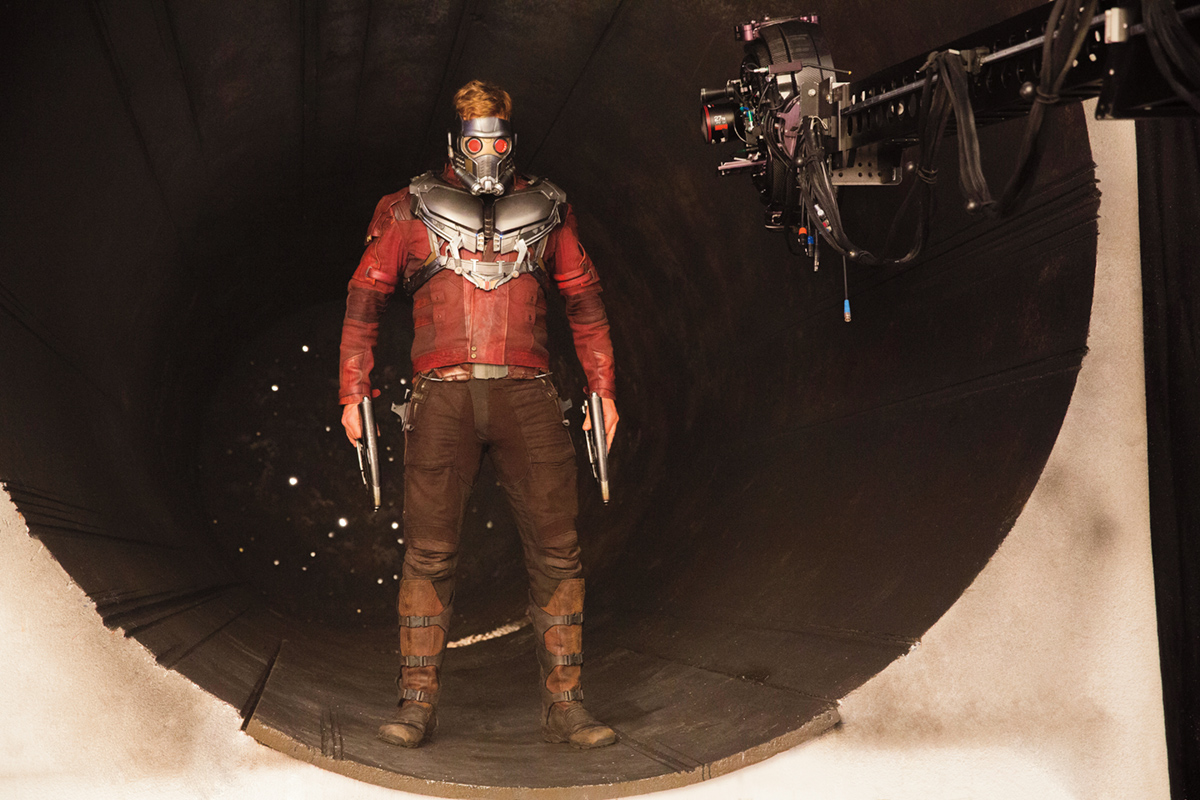
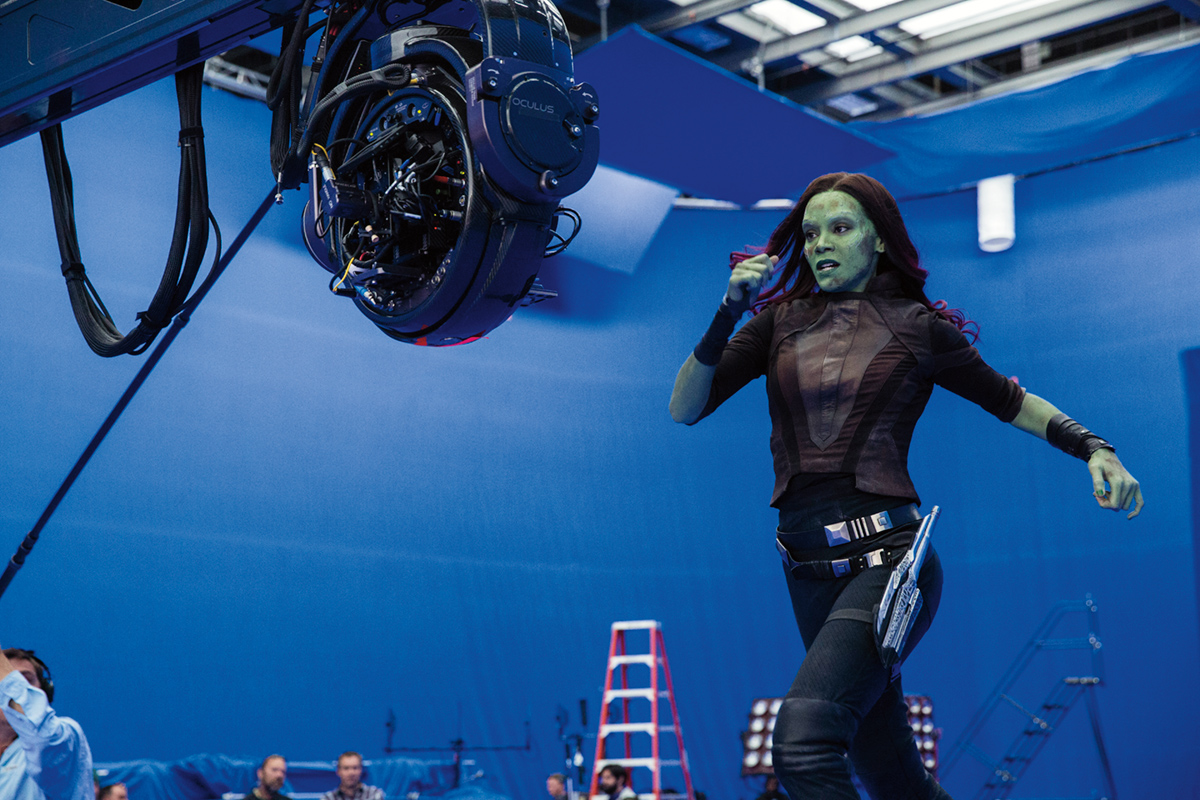
The Sky’s The Limit
Braham: Going from the prototype to a workable camera meant refining the color system with RED. This resulted in an extensive collaboration between RED, the VFX team and myself. For Marvel, we had to come up with a workflow that maintained what I set in the lab each night so it carried all the way through to final grade. The result was a perfect, counterintuitive solution that served the visual idea of the movie. The depth, richness and beauty of the image were countered by the physical size of the camera, enabling us to capture the spontaneity of the performances.
Veselic: Shooting 8K made depth of field a very critical concern, so adding the StabilEye rig in a situation where it is difficult to put marks down made things extra-challenging in terms of focus. I find the Preston to be very useful, but they only offered Heden, where you preprogram the lenses with your handset. I usually watch the actors rather than the knob, so it would have really thrown me off. To incorporate the heavier Preston, and add Cinetape to see the range, would make the whole stabilizer much heavier and impossible to balance. So, working with the grip department and my second AC, Craig Bauer, we decided a vest was the best solution. It carried a transmitter, an [Anton Bauer] Dionic battery, the Preston and a Cinetape readout, so none of that weight affected the camera rig, which was already burdened with the big 70 lens.
Christopher Townsend: 8K does present certain problems because it is pin-sharp and renders details on blue screen in an almost un-filmic manner. The 8K sensor was comparable to, if not as clean as, the ARRI 65. But we had to figure out our working resolution as well as delivery resolution, since there was no way we could run a full-resolution pipeline. Even when you look at 8K stuff down-rezzed to 2K, the temporal resolution appears far greater than 4K acquisition. 4K files are a quarter the size of 8K files, and the same is true going from 4K to 2K. Our tests showed that if the VFX were done at 2K and then up-rezzed to 4K, you’d get an image that was often 95 percent of what it would be if we’d stayed at 4K straight through. That’s not the case on some of the big, wide shots that were filled with marvelous detail; on those you could see the 4K difference. So we usually worked the image in 2K, but if there was a need to punch-in or add camera shake, then there was the option to go back to 4K to get that extra detail.
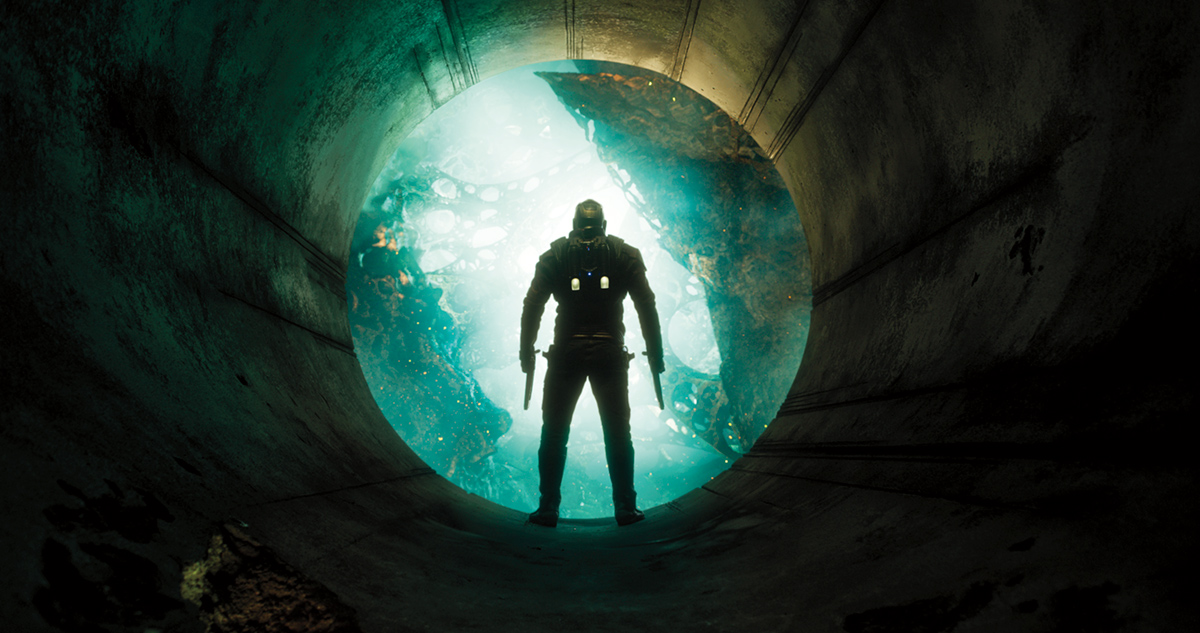
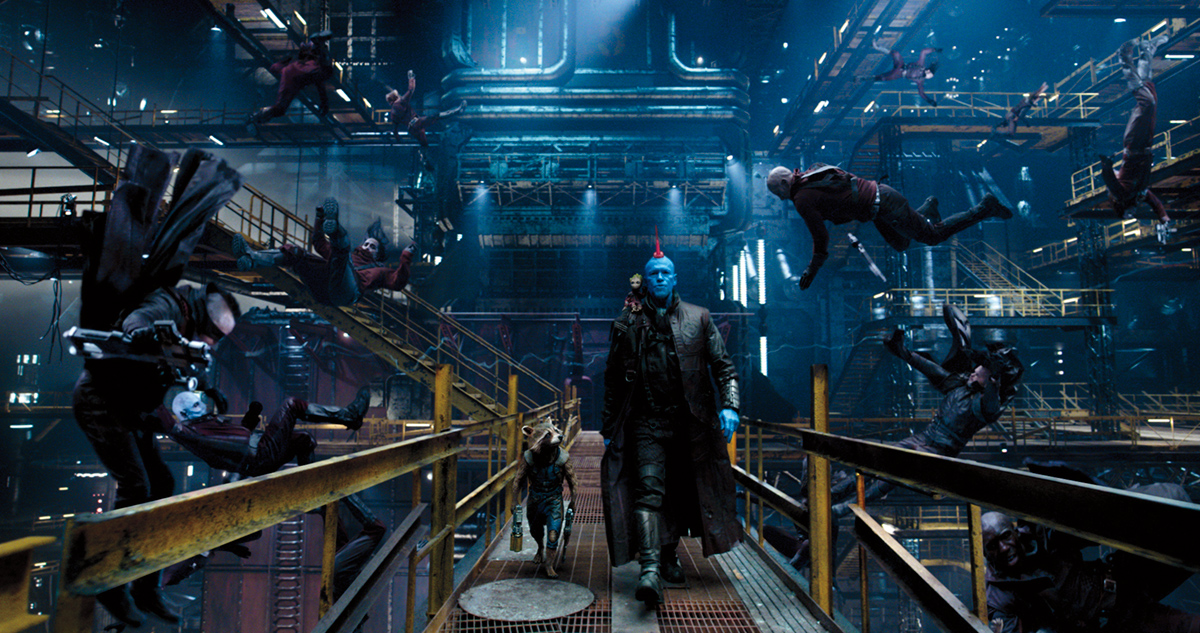
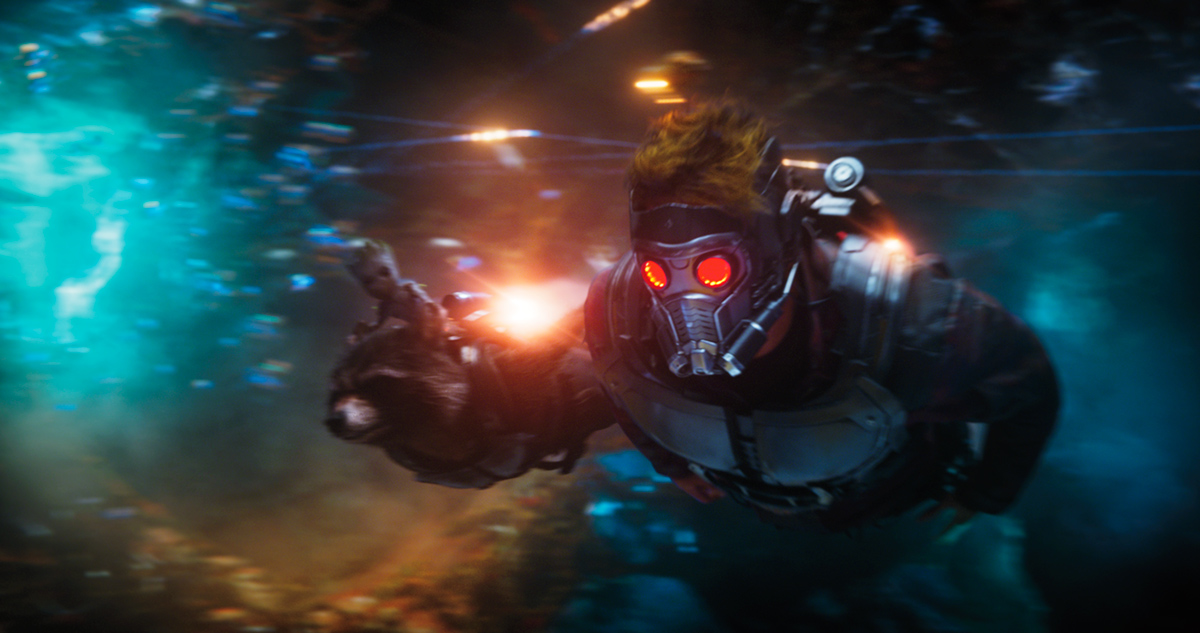
Old Friends, New Relationships
Townsend: When James and Henry blocked things out with the actors, they would do so while referencing the previs – it was extensive and not just a sketch for the director, but a real guide he knew by heart, so the spontaneous fluid feel still had a measure of control. Since it is a VFX-heavy picture, there were times when we would have preferred even more specificity going in, but I had to remember how things can and do change in post as well as during shooting.
Braham: Our previs not only took into account the size of the sets, but also the size of the camera, so the moves didn’t go beyond what was physically possible. Of course, even with all the added sophistication, it remains very difficult to get humanity into a previs camera move. But its usefulness in planning can’t be understated, because getting to see animated characters on previs flags all the challenges you’ll face photographically when blocking – Baby Groot is six inches high, and some of the actors are really tall!
Townsend: We had Weta Digital, Method in L.A. and Vancouver, and Trixter in Germany all working on Rocket and Groot, along with Framestore, which created them for the first film. And we had to ensure these very popular and lovable characters looked and felt the same, regardless of the many [VFX] vendors. There are only certain aspects that are shareable between VFX houses, and not everyone uses [simulations] and rendering programs in the same way. When Framestore built [Rocket and Baby Groot], they laid out a clear roadmap so other companies could apply that to their own internal methods. We would use turntables of these characters that show how they appear in environments, and you could have them match to that, for an apples-to-apples comparison.
Production designer Scott Chambliss and James were specific about creating a world for all these characters of ours that had its own look, one that would set it apart from other space movies. Our ships in space have a kind of 1970s rock-album-cover look – not just the shapes, but the colors, too. It was immensely fun for me seeing that come to life on screen, having grown up loving record-cover artists like Roger Dean. And James didn’t want any of our worlds to look too familiar – the dreaded “never before seen” – which is tough because there’s a lot of ground that’s already been covered. You want to go a bit further than just shooting in Iceland or Morocco and then adding a bunch of mountains or strange weather in post. It’s not just about creating stuff that is almost earthlike, either. Our planets have to really straddle things, feeling both fantastical and real. With the otherworldly aspects, you try to keep things as grounded as possible, which for me often means being very consistent with light and color.
Braham: The complexity of set design on these films has gone through the roof. We benefit from having many practicals and interactive lights built into these sets – a given on a space film – but there’s also a need to see some truth in photographing the real set, even if it is a show like this one, where 99 percent of everything is shot on soundstages. You have to believe the source of light is truthful.
Townsend: We always look back at what was shot on set and how it was captured. We even study why Henry chose the particular light, and then emulate how that light hits and spreads out across various surfaces. There are sources that you have to add in CG because they wouldn’t be practical to do on set, but again you work from that set reality to create this bigger look. It isn’t just a bunch of computers coming up with answers; it is always the hundreds of [digital] artists who are doing the creating for these images, figuring out where to place the lights once they understand how that light is supposed to work. It’s really where art meets science, since you’re using mathematics to create or recreate, all in a way that hopefully looks very realistic.
Braham: I like to show the audience where the light source is coming from, which means a close collaboration with the designer, to determine what the source is going to be and how it is going to read on-camera; if you do daylight exteriors in the studio, the physical lightbulb being used is as crucial as the diffusion you’re using on it. You’re on an alien planet, but what’s your reference? Answer: the world we know, so whatever you do has to resonate with truthfulness that relates to our world. Every part of this movie had an exciting collaboration with [product vendors], from the manufacturers of cameras, lenses and StabilEye to the lighting suppliers, like Sourcemaker, who made us these wonderful LEDs, and MBS Equipment, who provided Digital Sputnik LED units for other scenes.
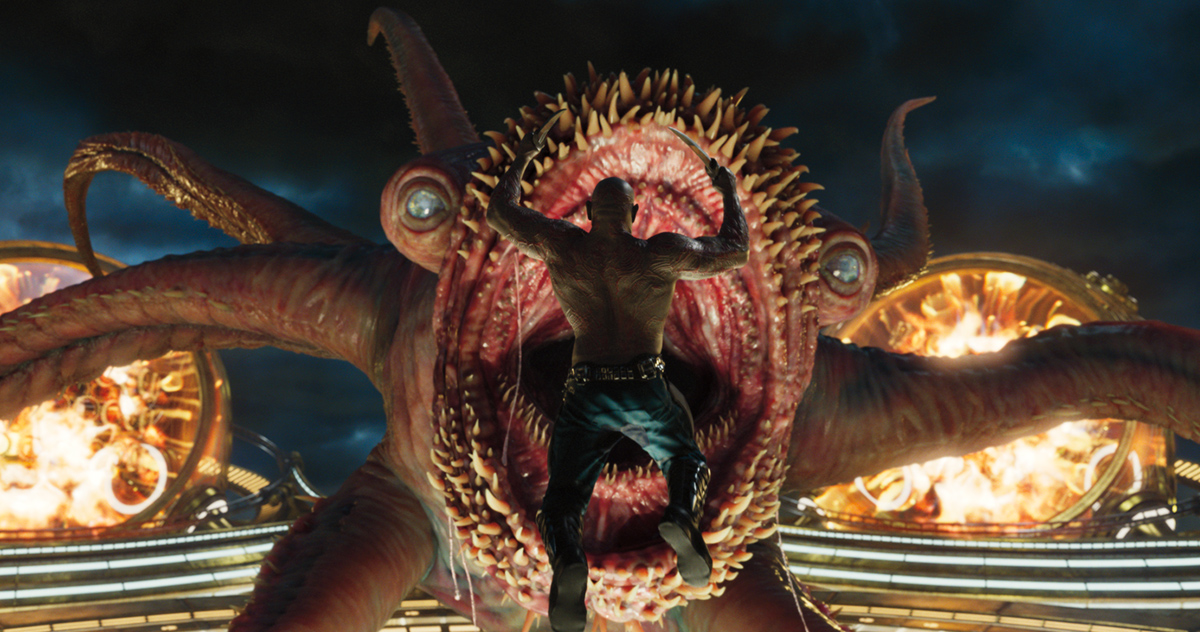
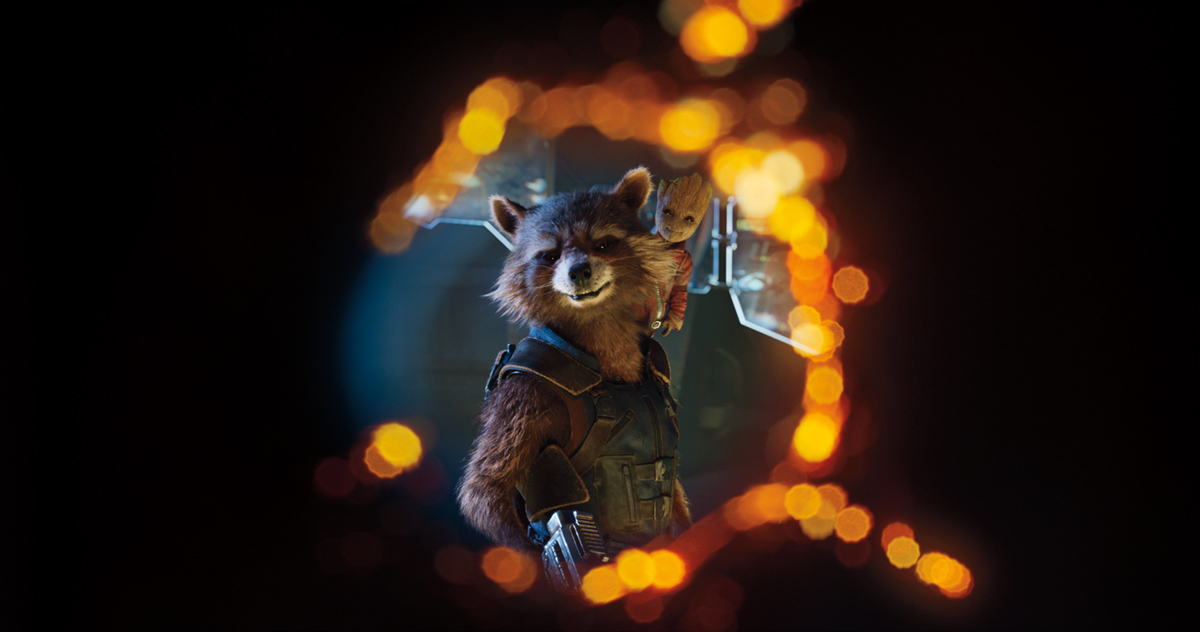
Flipping Out
Tommy Harper: James sent me an email saying, “You saved the movie” on the first film, because we wound up redoing the stunts back in the States during a reshoot. The new computerized equipment this time out made flying our performers in a 3D environment so much easier and more flexible. My lead rigger, Shawn Kautz, owns Stunt Rigs, and he’s invested a lot in this system [also used on Pirates of the Caribbean: Dead Men Tell No Tales]. We come in from four points on the stage to a center point, so we don’t have to [cut holes] overhead. We can fly somebody 50 feet in one direction while lifting them 20 feet up, then make a right-hand turn while continuing to ascend another 50 feet, and then come back and make a circle.
Braham: I like to shoot digital the same way I’d shoot on film, with no on-set monitoring. And then I do [the added-color and light-corrective] work away from the set in a controlled environment, where you can truly see if the image is up to scale. That means projected dailies to ensure that the highest quality is maintained, and testing all the time. [SHED senior colorist Matt Watson handled digital dailies.] We set up a system that everybody understands, and that meant when final grade arrives, nothing has been compromised. It makes for a straightforward DI, since VFX has a good idea about my intentions from my prep and lab work.
Harper: I had eight full-time riggers leapfrogging one another to keep ahead of the schedule. And once [the Stunt Rigs system] was preprogrammed, it would repeat every time. It does so safely, allowing us to put the actors in the environment, instead of relying on stunt performers and having to do face replacements. Gamora [Saldana] makes this huge leap to stab a monster, and we used both Zoe and her double for that. We took the actress 127 feet across the stage, and she wound up 36 feet up, and that included two points where she was supposedly landing and leaping again, all of which were programmed into this big extended move. We fly a weight bag before we put anybody on it, plus there is always a human riding an emergency-stop control [like a motorcycle handgrip with a big red button.] It’s protocol to have this kind of ultimate failsafe. Since we were indoors on sets, most of the explosions in the action scenes were suggested via interactive light rather than actual pyro. Special-effects supervisor Dan Sudick built fantastic gimbals and mechanical effects for the film.
Braham: The great thing about doing the second film is that so many issues have already been solved as to personalities and characterization. This one is 100 percent a James Gunn script, written with an expanded knowledge of the characters and the film’s intended scope, which meant everything got stepped up. Collaboration is always the most enjoyable part of the job for me, so having this terrific group alongside made for a memorable experience.
Crew List
Director of Photography
Henry Braham, BSC
A-Camera 1st Assistant
Zoran Veselic
A-Camera 2nd Assistant
Craig Bauer
B-Camera Operator/Splinter Unit DP
Kent Harvey SOC
B-Camera 1st Assistant
Alessandro Di Meo
B-Camera 2nd Assistant
Trey Twitty
C-Camera Operator
Richard Cantu
C-Camera 1st Assistant
Adam Castro
C-Camera 2nd Assistant
Zach Junquera
Loader
Zach Holloran
Still Photographer
Chuck Zlotnick
Publicist
John Pisani
